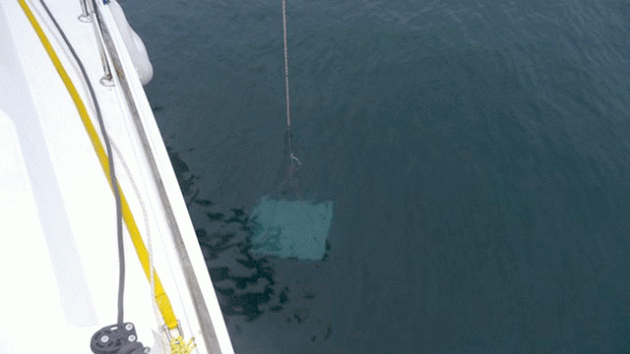Keen to counteract excessive boat rocking before a trip to the Scilly Isles, Peter Lyle constructs his own DIY flopper stopper with the aid of some scrap lead
Just occasionally, the ‘perfect anchorage’ may turn out to be seriously uncomfortable. This is usually when the current or the wind makes the boat lie beam-on to the swell, and as a result the boat rocks excessively.
I’d heard this could sometimes be a problem in the Isles of Scilly, so I decided to build the ultimate flopper-stopper in preparation for a trip to the islands.
There are more designs of flopper-stopper than there are of mousetrap, but most of them work on the same principle: boat rocking is damped by moving some sort of contraption up and down through the water. People have tried buckets, traffic cones, drogues and, of course, pukka flopper-stoppers. I cut a 60cm square from an old sheet of 12mm exterior plywood and rounded off the corners. The bigger the area of the flopper-stopper the more drag it will cause, but also the more difficult it will be to store: 60cm square seemed about right for my 11m (36ft) boat, and it also fitted flat in the cockpit locker.
The device needed to be heavy enough to sink, so I bought 4kg of lead from my local scrap metal merchant (£6), melted this in an old aluminium cooking pan using a propane blowtorch and moulded a lead ingot which I inserted into the plywood.
The flopper-stopper needed to be rigid, robust and waterproof, so having fixed the lead into a hole in the plywood with glassfibre, I encased it all with more glassfibre mat and gelcoat.
The finished contraption is suspended from the end of the boom, which needs to hauled out as far as possible, and supported with the topping lift and a gybe preventer. It should be lowered 2 or 3m below the surface.
It works, too: our visit to The Scillies was a comfortable one.
Peter Lyle
We pay at least £30 for every project published in PBO – send us yours today!










